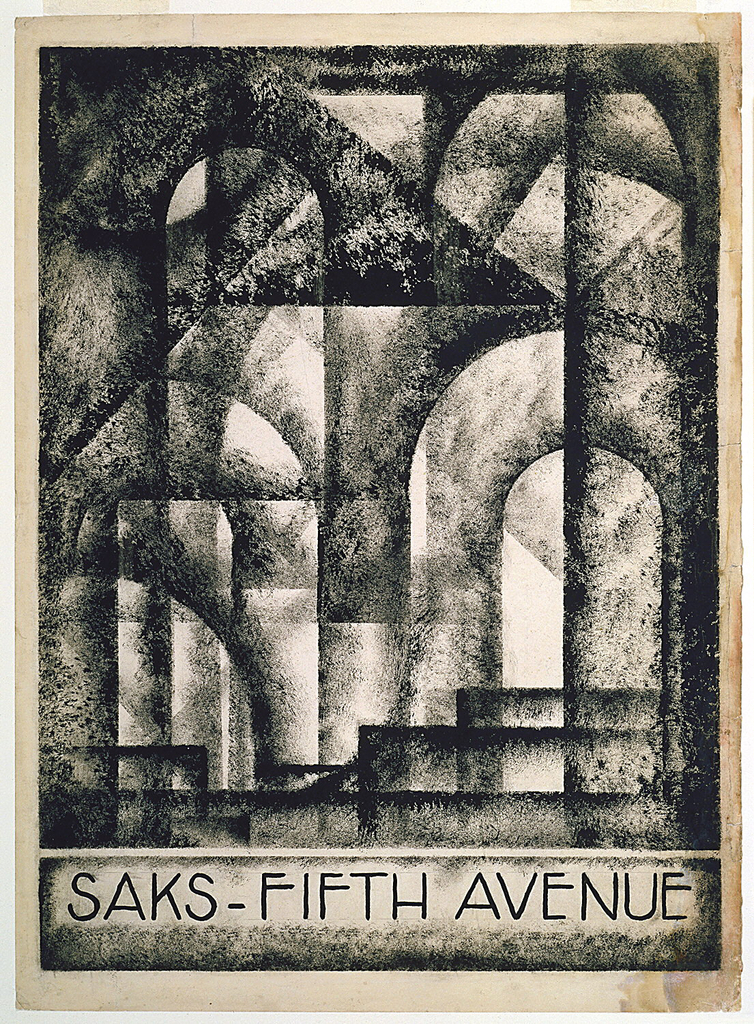In 1927, Adam Gimbel, President of Saks Fifth Avenue, commissioned the painter-turned-designer Donald Deskey to create a number of window displays, as well as covers for advertising brochures to rejuvenate the store’s image. This brochure cover Deskey sketched depicts an abstracted cubist landscape perhaps alluding to the bright open windows of Saks Fifth Avenue. Both the composition and style is reminiscent of paintings by artists like Georges Braque, whose work Deskey would have encountered in journals or at the 1925 Paris Exposition. This exposition, titled the International Exposition of Modern Industrial and Decorative Arts, featured a sleek jazz-age look, characterized by strong geometric compositions. The designs featured at this exhibition introduced the world to the modern European design aesthetic.
As the impact of the Paris World’s Fair began trickling into the United States, the modern style was met with resistance by American consumers who preferred more traditional concepts. Through the combined effort of designers, department stores, museums and the press, modern design eventually rose to the forefront of the American consciousness and taste. Designers like Deskey, who were commissioned by department stores in the late 1920s not only brought modern design to the attention of Americans, but it made modern design part of what it meant to be middle class. Department stores including Macy’s and Lord & Taylor used exhibitions of European modernist furniture and decorative arts to solidify their role in consumer society as the taste makers of the middle class.
By engaging with the visual vocabulary of contemporary artists, Deskey positioned his own designs amongst the ranks of modern art, while also elevating the status of department stores. His designs for Saks emphasize the department store’s connection with the high status of the fine arts community while simultaneously promoting the taste for the modern design aesthetic in America. This calculated use of modern art, “represents America’s newest venture toward raising shops and shop display above the common place and giving them fresh individuality.” These displays were also unique in that the department store setting drew an audience of average Americans and thus introduced the mode to the casual, browsing and shopping public more effectively than museum exhibitions in the US. Even today, the store-front windows and advertising materials of department stores continue to be both widely popular and extremely influential.
===
Whitaker, Jan. Service and Style: How the American Department Store Fashioned the Middle Class. New York: St. Martin’s Press, 2006.
“Modern Art in Shop Display.” Giftwares 10, no. 2 (1927): 20.
